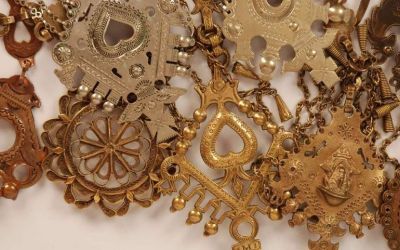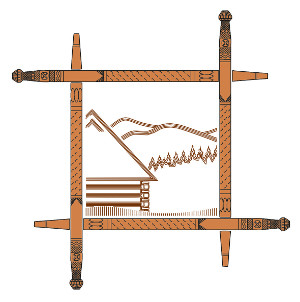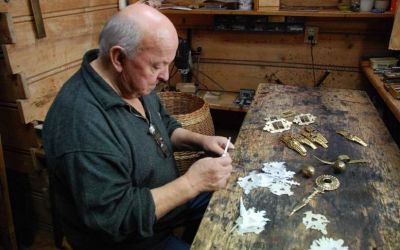
Chains, spinecks, these are nase outfits, Owiecek the leprechaun, comfortably nase. This is one of many shepherd chants that shows how important the decoration in the form of a metal cufflink from the shirt was for the Juhas. Highlander cufflinks by experts are considered one of the most archaic elements of the outfit, which has only slightly changed over the centuries. Interestingly, cufflinks can be found throughout the Carpathians, regardless of the region. Relationships with Gothic fibulas (metal buckles) were seen in them and the meaning of signs engraved on them, including the cross, astral and zoomorphic motifs, was sought. Cufflinks from the earliest times fulfilled a role on one hand - they fastened shirts on the chest - on the other decorative - they decorated the shepherd's clothes. In addition, they had magical significance contained in ornaments, giving them the power of an amulet to guard against misfortune and charm. They were made of copper, brass (copper and zinc alloy) and bacuun (copper, nickel and tin alloy). The oldest ones, the lances were cast from metal using special forms, hollow in stones or made of clay. Another type of decorations were metal cufflinks cut with chisels in a metal sheet about 3 mm thick.
In the past, a recognized spinning workshop was located, among others in Ratułów, where this occupation was occupied by Ignacy Prokop and Antoni Kubin and others. In Bukowina Tatrzańska, the products of Józef Bigos from Głodówka, who had a student - Józef Koszarek, who continued the tradition of his master, received the most praise. Nowadays, not only cufflinks come out of his hand, but also buckles for shepherd's belts, buckles, robber knives, guns, metal windows in which a feather is attached to the hat, as well as signets handed to persons who are fitted on a robber during "Sabalowe Bajań". Mieczysław Król Łęgowski was also a known creator of hairpins.















